Yamaha ramps up the tech with new Y-AMT automated gearbox, here is our first impressions of the 2025 Yamaha MT-09 Y-AMT…
Yamaha’s bikes have always been at the forefront of technology. That sounds like something a smug company marketing wonk would come out with so I must immediately qualify it by saying that it’s not always been totally successful technology.
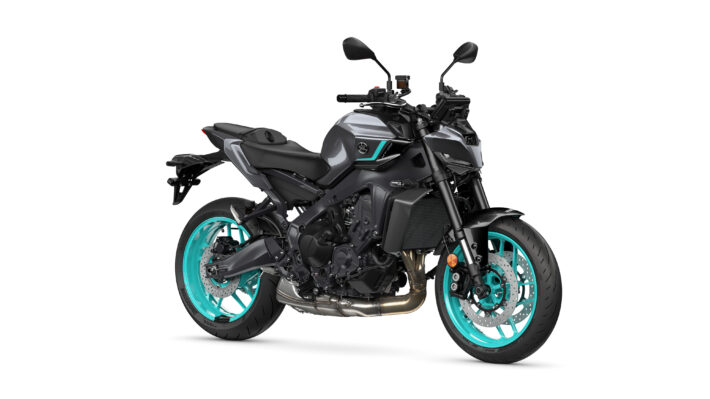
There’s plenty of stuff in the positive column of course: the YPVS Yamaha Power Valve System used to boost torque on two-strokes, efficient five-valve cylinder head designs and four-stroke EXUP exhaust valve systems, ride-by-wire fuel injection, Monocross rear suspension, Deltabox frames – the list of firsts goes on.
Meanwhile, in the red column, we have hub-centre steering as seen on the GTS1000, and the Niken three-wheeled leaning front end – great engineering, but stuff that has done less well in the market. Generally though, the firm gets a lot more right than wrong.
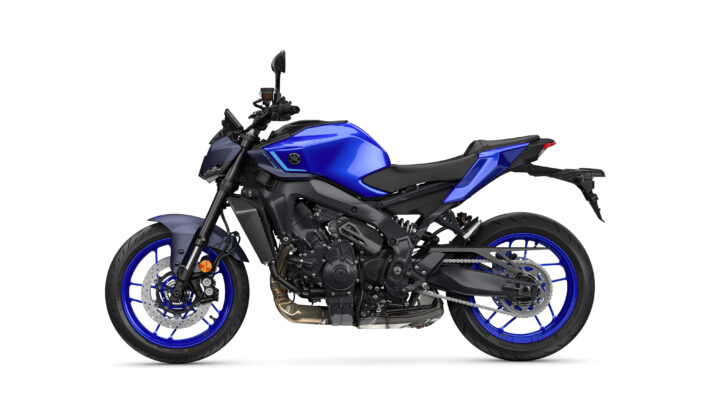
And now the tuning fork firm has come up with another new tech setup – the Y-AMT, or Yamaha Automated Manual Transmission. It’s not quite a first: Honda and BMW have both recently launched similar automated gearboxes, and Honda has been selling its DCT dual-clutch autobox for years now.
There’s plenty of CVT scooters out there too, and we’ve had various other attempts at auto boxes over the years – including Yamaha’s own Y-CCS Yamaha Chip-Controlled Shift on the FJR1300 back in 2006 (arguably another one for the firm’s blooper reel).
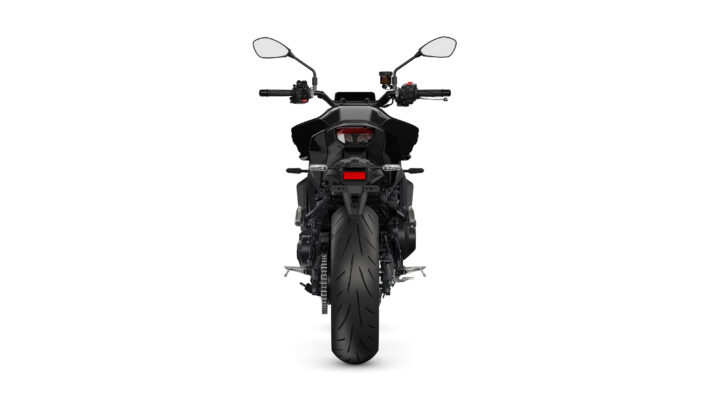
This is the current state of the art though: a robotised reboot of a normal sequential gearbox, almost identical to a standard transmission, but with computer-controlled electric motors operating the clutch and gear lever.
Cunning electronics have been honed by hundreds of thousands of testing gearshifts, aimed at replicating the subtle touch of a human rider when pulling away from a red light – but also replicating the full-power high-speed shift of a rider on a mad mission up a mountain pass, or even on a racetrack.
We’re in Spain, north of Barcelona, up in the pre-Pyrenees for this presentation. Yamaha’s prepared a full day of riding, with more than 300km on the route, and a wide range of road types. The weather looks dodgy (and turns out even dodgier), but I’ve got my waterproofs in my Alpinestars drybag, some spare winter gloves, and some Gore-Tex boots on. Let’s go…
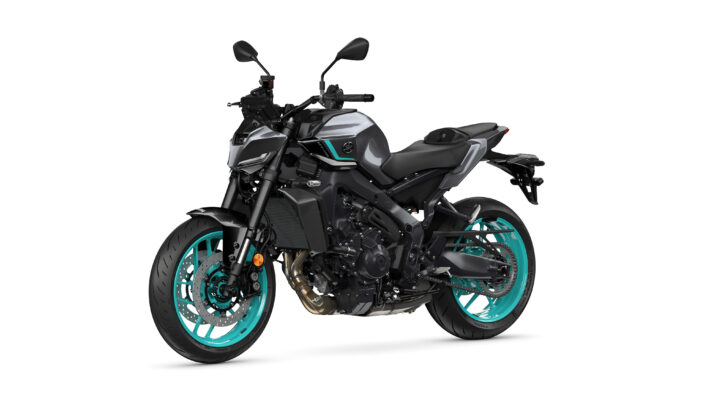
At the tech presentation the night before, we had a full rundown on how the new Y-AMT works, so I’m ready for the lack of either clutch or gear lever. My left hand isn’t totally redundant though: it gets a new switch to play with, a two-way ‘see-saw’ control which you operate with forefinger and thumb, or just forefinger.
It’s shaped so you can push it forward or back with your finger, though since I have been cursed with stump digits, I find that easier than moving my hand back and forth slightly to let my thumb fully engage. You’ll find your own way to work it for sure.
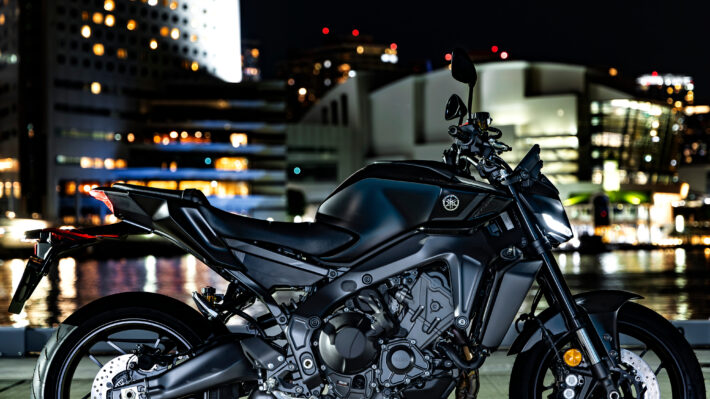
That ‘see-saw’ switch is used in the manual mode to shift up and down gears, and into neutral (which is now at the bottom of the shift pattern). But there’s a fully-automatic ‘D’ mode, accessed by a switch on the right hand bar.
Yamaha’s also added a ‘D+’ mode which is a slightly sportier shift pattern: it holds onto the revs higher and changes a bit later, like the ‘Sport’ mode seen on many car automatic transmissions.
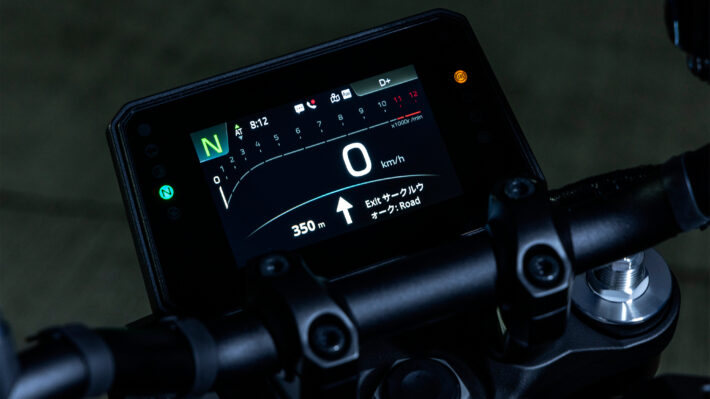
We’re ready to leave the hotel now: I set off in automatic ‘D’ mode, and gingerly open the throttle. Smooth and steady clutch application ensues, and I’m off, manoeuvring through the car park and out behind the test rider.
I’ve not actually ridden an MT-09 for a while, and this latest 2024 model is a new experience for me in itself. There’s little in the way of surprises though: it’s a neat, capable upper-middleweight naked roadster, with a great engine, slick handling, comfy riding position and plenty of kit.
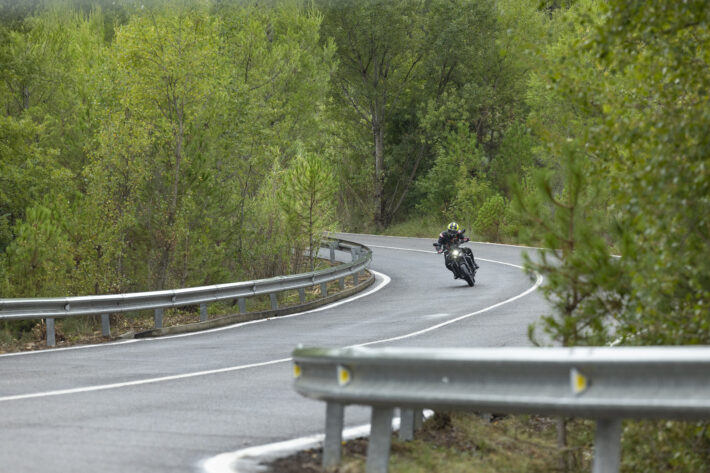
The Yamaha rider is warming up nicely, and I settle into the ride. After a few miles, I start to have a fettle with the Y-AMT setup, and it’s really simple to use. Swapping between auto and manual is super-easy, just close the throttle and press the button.
There’s a slight confusion with the rider modes: when you switch into auto, you lose the various rider power modes – sport, street, rain, etc – and just have the D and D+ modes. Switch back to manual, and the bike seems to default to Street regardless of what mode you were in before.
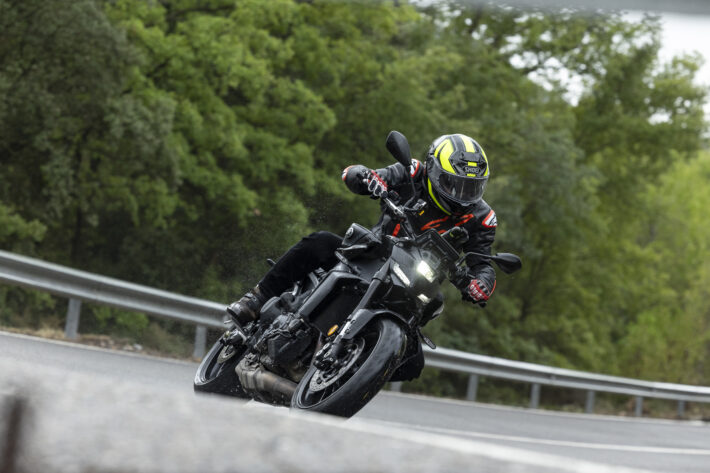
It’s a tiny bit confusing, and I couldn’t quite understand the rationale around losing the YRC rider modes when the gearbox is in automatic.
I’ve moved on though, and am sticking to manual gears for the moment. It’s needed too, as the Yamaha man out front is turning up the wick. We’re into the hills now, and there are damp patches everywhere, plus some ominous dark clouds and the odd drifting patch of mizzle. Gah. I move on from that in my head too though, and concentrate on keeping up with the lead rider.
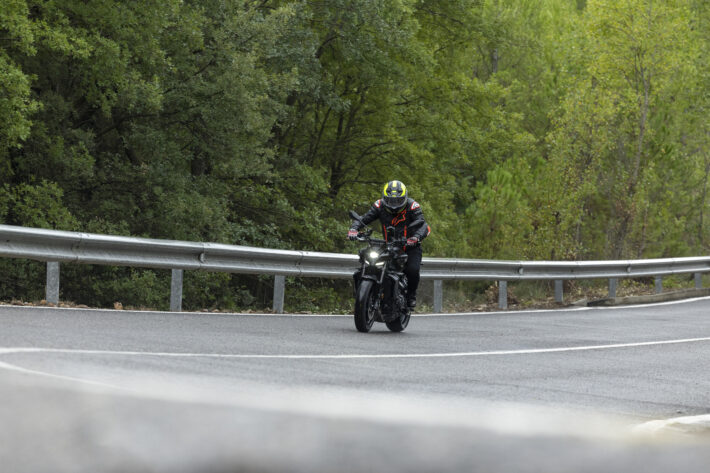
The MT-09’s doing great work below me: the engine is strong, grunty and smooth, howling its way up towards the redline like a good ‘un. The brakes are coming into their own as the bends start to come thick and fast. But the Bridgestone S23 tyres are the kings of the road at the moment: there’s no movement at all over tarmac patches, damp spots or over-banding, even as the rain begins falling properly – impressive stuff.
But what about the gearbox that we’re here for? Well, it’s certainly uppermost in my mind, because I suddenly have to think about gearchanges – a lot. I’ve been riding bikes since 1989 (eek), and for 99.9 per cent of that 35 years in the saddle, I’ve been hoofing a little lever up and down with my left foot, and tickling a clutch with my left hand.
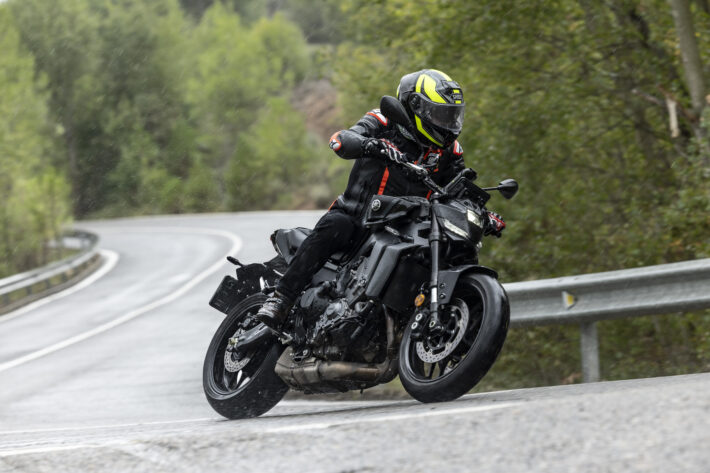
Today though, my lower limb is completely redundant, but my hand has a new job, tickling a cunningly-shaped little nubbin. The presentation said you can use your finger and thumb to go up and down, but I’ve been cursed with stumpy digits, so I end up using the alternative method, which is to push the front part of the switch forward and backward with my index finger, rather than shuffling about to get my thumb to reach the rear part of the button. You’ll find your own way I’m sure.
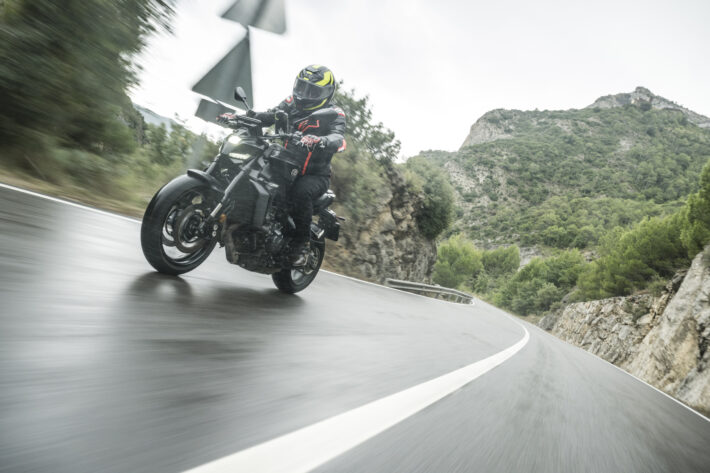
The point is, that a job which is almost as natural and hard-wired for me as breathing is now something I have to devote mental function to. It’s a little like the odd time I get on a track bike with race shift: you need to engage a new subroutine in your brain, which is fine, but does take a little bit of thought.
It’s not getting in the way much though. I only go for a foot change once or twice (most disastrously when attempting a wheelie, which the MT-09 is most definitely still up for), and only get caught out with the throttle once, when I was sitting parked up in what seemed like neutral and I revved the engine, only to start shooting forwards…
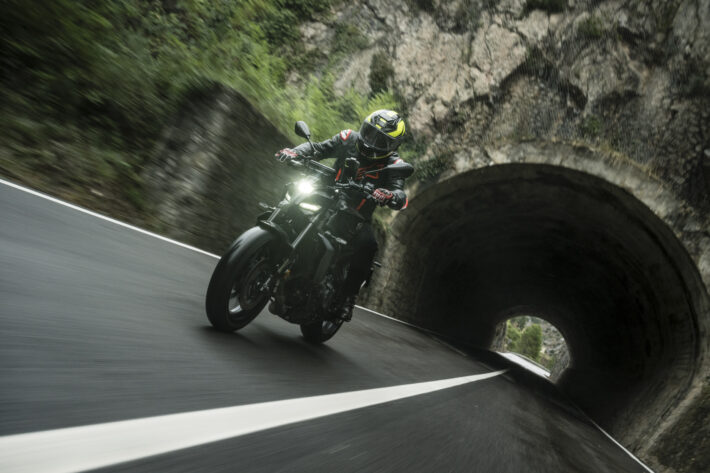
Otherwise, it’s a simple, efficient, and effective setup. The auto modes are fairly anodyne: they work well, if a bit steady, and the D+ mode didn’t really make a lot of difference to the feel.
It’s a conservative setup, perhaps understandably on their first go, and it feels like you have a fuel-consumption-obsessed IAM instructor in charge of your gearshifts, smoothly shifting up as soon as they can. I gave it a go now and again but I definitely felt happiest in manual, on this test ride at least.
Because the manual mode is great: the shifter bangs the gears in super-rapid, and works every time. You can change down even when accelerating – handy when you’ve misjudged the revs and need to bang down another cog – and you can also shift up when decelerating, which is one of those things you don’t think about until you can’t do it.
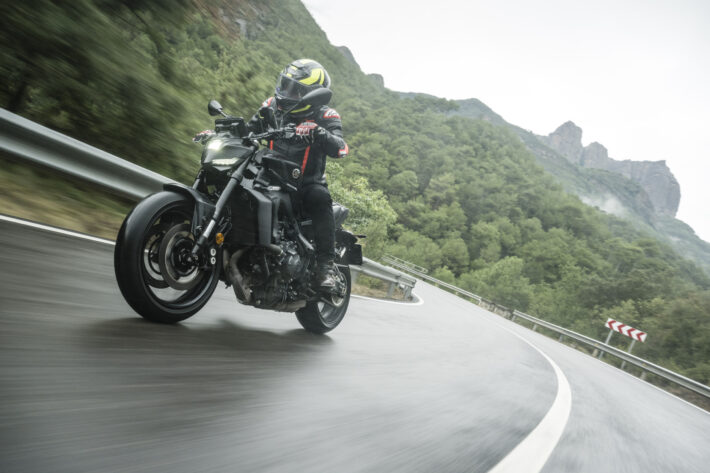
Essentially, the little button works a treat – and any snafus are down to my old brain getting temporarily cerebrally-embarrassed. The Yamaha rider upped the pace throughout the rest of the day, until on one section of road we were riding at proper 10/10ths, and the gearbox turned out to be no limit at all.
Hold your shifts until near the redline, and you get a lovely pop as it smashes the next cog into place: it feels aggressive as hell, but you know that the clever Japanese computer algorithm is actually being really careful, dipping the clutch a little, fiddling with the throttle valves, and keeping the gear dogs all nice and safe, all in a tenth of a second.
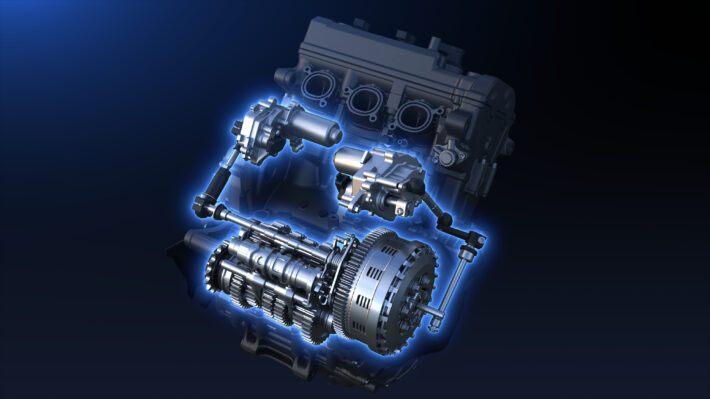
So, after one of the most fun days I’ve had on a bike in a while, how do I think Yamaha’s latest tech will do? On one hand, it’s an effective, efficient system, and does what it claims, with no fuss. It’s a very good automated transmission and all the different modes work well.
On the other hand, for an older, experienced rider, you need to download a new set of transmission software into your own brain, and that can take time to overwrite the existing hard-wired routines.
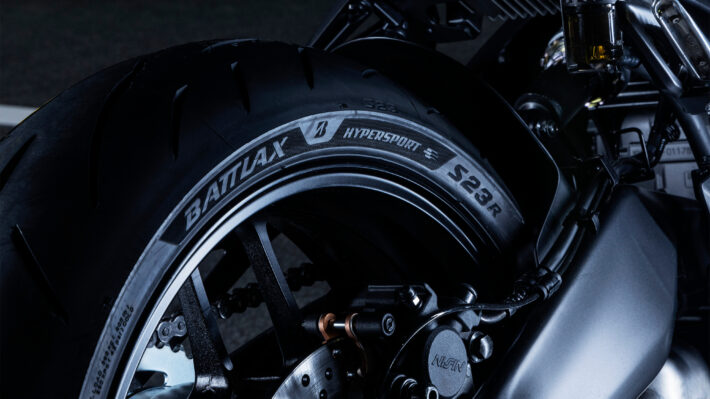
I’d also query the bike the firm has launched the system with: a Tracer Y-AMT would probably make more sense than the sporty MT-09, and I fully expect to see the setup on Yamaha’s adventure touring machinery for 2025.
It’s going to be useful for a lot of riders who value touring and urban ease over backroad madness (though the Y-AMT is pretty good at that as well). And there’s little in the way of downsides in terms of utility, cost (it’s £550 more) or mass (2.8kg extra).
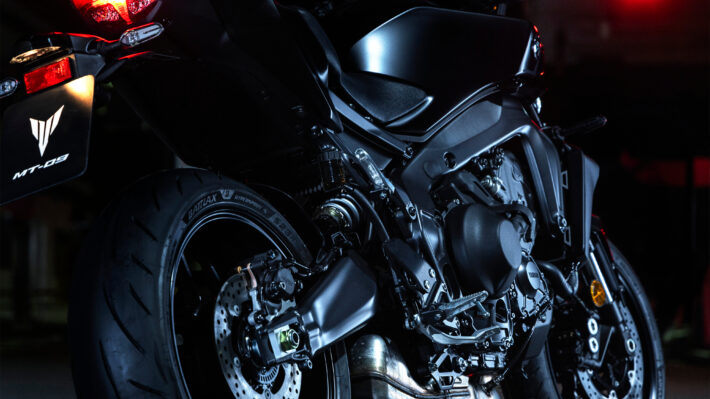
Yamaha also says one of the reasons for developing Y-AMT is that new riders are less likely to have come across a manual gearbox elsewhere – the majority of cars built now are automatic, and that’s going to increase massively as electric and hybrid cars dominate.
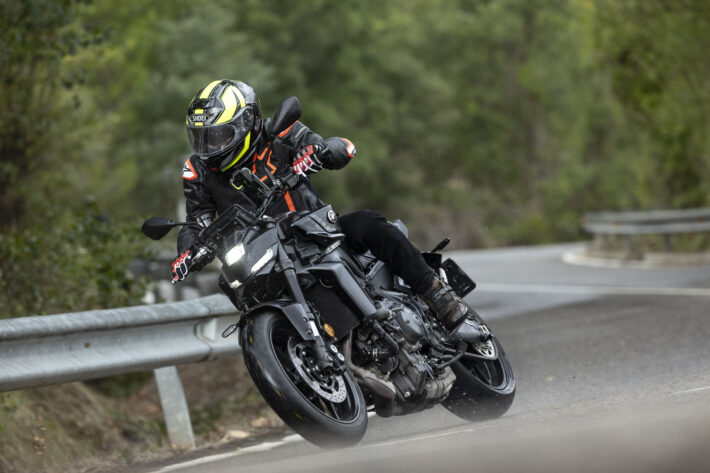
And if a manual shift is something you’ve never seen, you certainly won’t miss it. All of which is a roundabout way of saying I reckon this setup will be more EXUP than GTS1000 in terms of success for Yamaha…
www.yamaha-motor.eu/gb/en/motorcycles/hyper-naked/pdp/mt-09-y-amt-2024
TECH BOXES
Y-AMT
A computerised take on a standard motorcycle sequential dog gearbox, with selector drum, shift forks, wet clutch and everything else you’d have on a ‘normal’ bike. But Yamaha’s replaced the meat-driven clutch and gear levers with robotic actuators linked to a smart Motor Control Unit (MCU) ‘brain’.
That itself speaks to the ride-by-wire throttle and engine controls, and utilises the same quickshifter setup as on the manual bike. The result is two main modes: automatic and manual override, with the MCU taking care of all clutch and gear functions in auto, and the rider changing gear with a two-way ‘see-saw’ switch on the left hand bar.
There are two automatic modes: ‘D’ and ‘D+” with D+ being a bit sportier, holding onto revs longer and delaying shifts.
The gearbox now has neutral at the bottom, below first gear, and claims to shift in just a tenth of a second. The Y-AMT setup also leaves the bike in gear when parked, giving extra security, since it can’t be turned on to shift out of gear without the key.
The entire Y-AMT hardware adds just 2.8kg to the bike mass – and the engine is no wider or taller than standard. The two motors are tucked away behind the cylinder block, with tidy linkages and neat covers.
Engine
The 890cc triple 12-valve DOHC Euro 5+ unit launched for 2024, with tweaked gearbox and intake, but the same solid, fun performance from 118bhp peak output.
Frame
Controlled-fill die-cast aluminium diamond type frame with slight mods to engine mounts and steering head for better stability and improved turn-in. Riding position is also a little sportier than the 2023 bike.
Suspension
Decent spec road riding kit from KYB: fully-adjustable 41mm USD front fork and a preload/rebound adjustable rear monoshock. Cast aluminium swingarm.
Wheels/tyres/brakes
Yamaha’s own spin-cast aluminium wheels that are lighter than conventional cast rims for the same stiffness and strength. 2024 saw a move to a new Bridgestone S23 M tyre, specially made for the MT-09, and the brakes are the usual Yamaha silver-spot radial-mount four-piston calipers with 298mm discs, and a 16mm Brembo master cylinder.
Equipment
Apart from the Y-AMT and the Smart Key keyless ignition setup, the rest of the electronics and kit is the same as the stock 2024 MT-09. That means full-colour TFT dash with multiple display modes and an extensive rider aids package, including IMU-assisted traction, wheelie, slide and brake control, cornering ABS, rider power modes and cruise control. That’s all accessed with new switchgear that has a joystick control built in.
The new MT-09 Y-AMT will be available in the same three colours as the MT-09 model – Tech Black / Midnight Cyan / Icon Blue
PRICING
UK recommended Retail Price for the MT-09 Y-AMT is £10,656 including VAT and all on the road costs. That’s a £550 premium over the standard 2024 model MT-09 model, which costs £10,106 (you also get the smart keyless ignition which is comes on the MT-09 SP). The first units are expected to arrive in UK dealers by mid-October.
Yamaha UK has also provided a representative PCP example below, which is £10 per month more than the standard model.
Personal Contract Purchase Representative Example – Yamaha MT-09 Y-AMT
Cash price of vehicle £10,656.00
Deposit £3,009.25
Amount of credit £7,646.75
Interest £1,953.50
Total charge for credit £1,953.50
Representative 9.9% APR
The credit and the charge for credit is repayable by 36 monthly payments of £109.00
1 final payment of £5,676.25
Total amount payable £12,609.50
Duration of the agreement 37 months
SPECS
Price: £10,656
Engine: DOHC 12v, inline-triple, l/c, 890cc
Bore x stroke: 78×62.1mm
Compression ratio: 11.5:1
Carburation: ride-by-wire fuel injection
Max power (claimed) 118hp@10,000rpm
Max torque (claimed) 68.6ft lb@7,000rpm
Transmission: six speed gearbox, wet slipper clutch, chain final drive
Frame: diamond type controlled-fill die-cast aluminium
Front suspension: 41mm USD KYB front fork, fully adjustable
Rear suspension: cast aluminium swingarm, preload/rebound-adjustable KYB monoshock
Brakes: twin 298mm discs, four-piston radial-mount calipers (front), 245mm disc, single-piston caliper (rear), cornering ABS. 16mm Brembo master cylinder
Wheels/tyres: spin-cast aluminium, 120/70 17 front, 180/55 17 rear
Rake/trail: 24.4°/108mm
Wheelbase: 1,430mm
Kerb weight : 196kg
Fuel capacity: 14 litres
Equipment: 5” connected TFT LCD dash, LED projector headlight, cruise control, keyless ignition, rider power modes, IMU-assisted traction, wheelie, slide control, cornering ABS